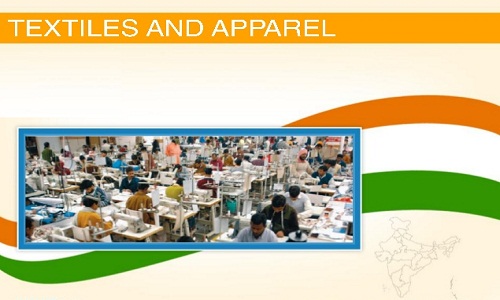
The textile industry plays a major role in the economic life of the country and contributes greatly to industrial output, employment generation and export earnings as well. The industry’s contribution to industrial production in 14 per cent, to India’s GDP, it is 4 per cent and it constitutes 13 per cent to the country’s earnings. By 2016-17, the domestic textile and apparel industry in India is estimated to reach $100 billion this period.
The textile industry in India is diverse with the hand-spun and hand-woven sector at one end, and the capital-intensive, sophisticated mill sector at the other. Besides, the close link to the ancient culture and traditions of the country and the agriculture make it unique when compared to other countries. This also provides the industry with the capacity to produce a variety of products, which are suitable for different market segments, both within and outside the country.

The industry has a potential to grow five-fold over the next 10 years and touch the $500 billion mark on the back of growing demand for polyester fabric. This includes domestic sales of $315 billion and exports of $185 billion. Currently, the domestic market comprises of $68 billion and exports of $40 billion. The total fabric production in the country is expected to grow to 112 billion square metres by 2016-17. Moreover, India’s fibre production is expected to reach 10 million tonnes in the same period.
Export & Import
One of the mainstays of the national economy, the country textiles and clothing industry is also the largest contributing sectors to its export across the world. The exports of the textiles and clothing is estimated to go to $64.41 billion by the end of March, 2017 as predicted by Working Group constituted by the Planning Commission. In 2015, export of textile products increased marginally by 0.46 per cent to $37,137.32 million as compared to $36,967.56 million in last year.
Also, India is not dependant on import when it comes to textiles. Majority of import takes place for re-export or special requirement. In the fiscal year 2015, the import of textile products increased by 13.98 per cent touching $5,511.95 million as compared to $4,835.93 million in 2014. The textile industry is trying to get a duty cut on man-made fibre as high cost of the key raw material for making blended garments is making Indian goods uncompetitive in the global market. The industry is in consultation with the finance and revenue departments regarding this. Man-made fibre draws and excise duty of 12.5 per cent, but it has import restrictions. These lead to a cumulative duty of 29 per cent.
Bright future for the industry
The last five years have seen a spurt in investment sin the textile industry. All segments of the industry, including the dyed and printed attracted foreign direct investment (FDI) worth $70.82 million or Rs 444.43 crore during April 2015.
The government too has launched various schemes to support the industry. Minister of State for Textiles launched a scheme to promote usage of Geotechnical Textiles in the North Eastern Region of India, at Imphal. The government has also launched a new institution, Handicrafts & Carpet Sector Skill Council to promote skill development among artisans, crafts people and workers at grassroots level. The corporates too are supporting the industry in many ways with various partnerships and joint ventures with players from the industry.
Overall, the future for the textile industry looks very promising in both ways—domestic as well as international.












